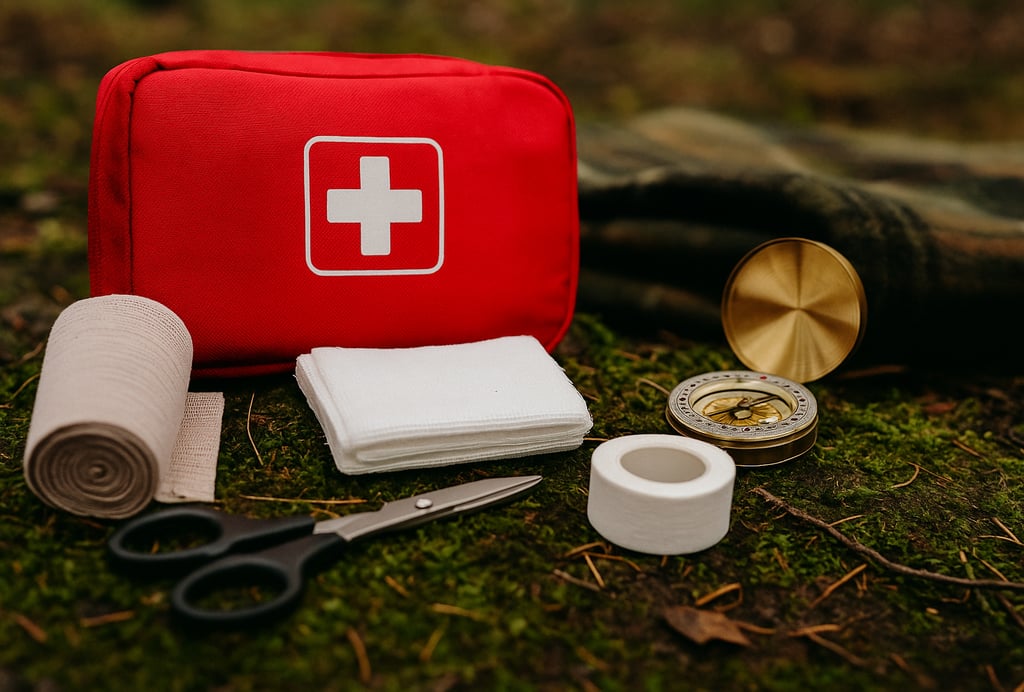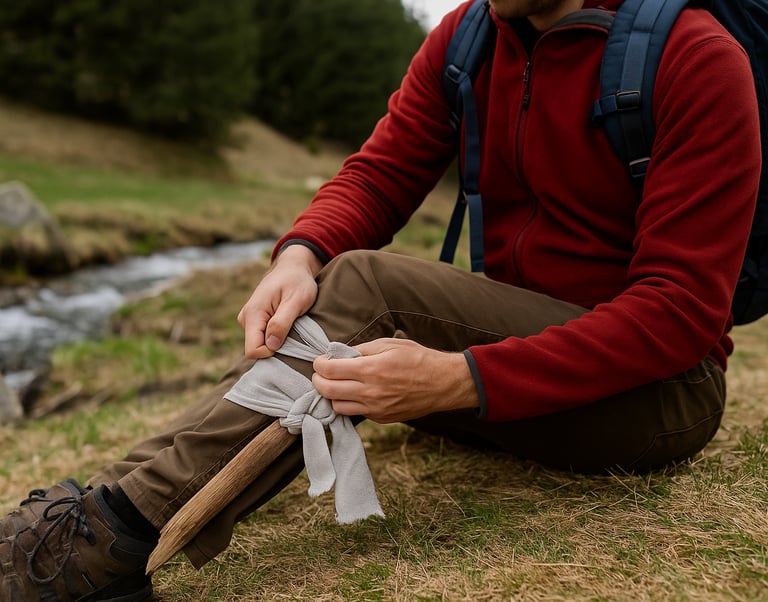Common Wilderness Injuries and How to Treat Them
Learn how to treat the most common wilderness injuries — including cuts, sprains, burns, stings, and exposure — with this beginner-friendly survival first aid guide for hikers and outdoor adventurers.


Common Wilderness Injuries and How to Treat Them
Why Knowing Wilderness First Aid Matters
When you're off the grid, even a minor injury can quickly escalate without the right knowledge. Unlike in urban settings, professional help isn’t just a phone call away. That’s where wilderness first aid comes in. Understanding how to treat common outdoor injuries is one of the most important survival skills you can have — not just for yourself, but for those around you.
Whether you're backpacking through the woods or hiking local trails, accidents can and do happen. From twisted ankles to bleeding wounds, quick and informed action can mean the difference between a minor issue and a serious emergency.
The Most Common Outdoor Injuries (and Why They Matter)
Most wilderness injuries are completely preventable or manageable — if you know what to do. Cuts, sprains, burns, bites, and exposure are by far the most common problems hikers and campers face. But even mild symptoms can turn dangerous fast if you're unprepared. The key is knowing how to respond early before a small injury becomes a bigger survival issue.
Treating Cuts, Scrapes, and Bleeding in the Wild
Minor wounds are incredibly common in wilderness environments, and they need to be treated properly to avoid infection. Start by cleaning the wound with the cleanest water available — boiled, filtered, or purified. Use a cloth or sterile gauze if you have one to gently wipe away dirt and debris.
After cleaning, apply pressure with fabric or a bandage to stop any bleeding. Once the bleeding has slowed, wrap the area with a clean dressing and secure it. Keep an eye on the wound for signs of infection like redness, swelling, or pus. If you’re deep in the backcountry, even a small cut can become dangerous if neglected.
If you want to be better prepared for these kinds of emergencies, it helps to know the core skills taught in wilderness first aid training and how to build a splint or sling from natural materials when professional gear isn’t available.
What to Do for Sprains, Strains, or Twisted Ankles
One of the most common hiking injuries is a sprained or twisted ankle. It doesn’t take much — a hidden root, uneven ground, or a moment of distraction. If someone rolls their ankle or hyperextends a joint, the first step is to stop and assess.
Support the area using a makeshift splint if necessary. Use a straight stick or trekking pole, padding it with cloth, and wrap it with a bandana or shirt to keep the limb stable. Elevate the injury when possible and cool it down with water or a cold compress if available. Rest is key. Continuing to hike on a sprained joint can turn a one-day recovery into a multi-week injury.
Dealing with Burns While Camping or Cooking
Burns from fire, hot cookware, or even steam are more common in the backcountry than you might think. If someone gets burned, immediately remove the source of heat and cool the area with clean water — never ice.
For minor burns, gently clean the area and loosely cover it with a clean bandage to protect against infection. Avoid popping blisters. For more serious burns that cover a large area or involve charring, the injured person may need evacuation as soon as possible.
Insect Bites, Stings, and Reactions
Insect bites and bee stings may seem like small annoyances, but they can lead to serious reactions in the wild. Clean the bite area with water and apply a cool compress if it swells. Over-the-counter creams or antihistamines can reduce itching and inflammation if you packed them.
If someone begins to show signs of an allergic reaction — trouble breathing, swelling of the face, or hives — it’s time to act fast. Administer an epinephrine auto-injector if one is available and prepare for emergency evacuation.
Preventing and Managing Hypothermia and Heat Exhaustion
Environmental exposure is a huge risk in outdoor settings. Hypothermia can set in quickly if someone gets wet and cold, especially at night. Keep a close eye on your group’s core temperature and dry, layered clothing. If someone starts to shiver uncontrollably or becomes confused, get them out of the cold, remove wet clothes, and warm them up slowly with dry insulation.
On the other hand, heat exhaustion or heat stroke can hit hard in hot weather. Symptoms include dizziness, nausea, cramps, and confusion. Get the person out of direct sunlight, loosen their clothing, and help them cool down with shade, water, and rest.
Environmental dangers like these are some of the biggest challenges in backcountry travel, which is why they’re a core part of every wilderness first aid certification and heavily emphasized in intro-level wilderness safety courses designed for new outdoor adventurers.
When to Stop and Seek Help
Sometimes, the best wilderness first aid isn’t what you can do — it’s knowing when to stop and seek help. If someone can’t move, loses consciousness, has heavy bleeding you can’t control, or shows signs of severe illness, it’s time to call for a rescue or head out for professional medical help.
Preparation is everything. When you know what to do in those critical moments, you're not just hiking, you're leading, protecting, and potentially saving a life.


© 2025. All rights reserved About | Privacy Policy | Terms and Conditions | Affiliate Disclosure | Disclaimer


